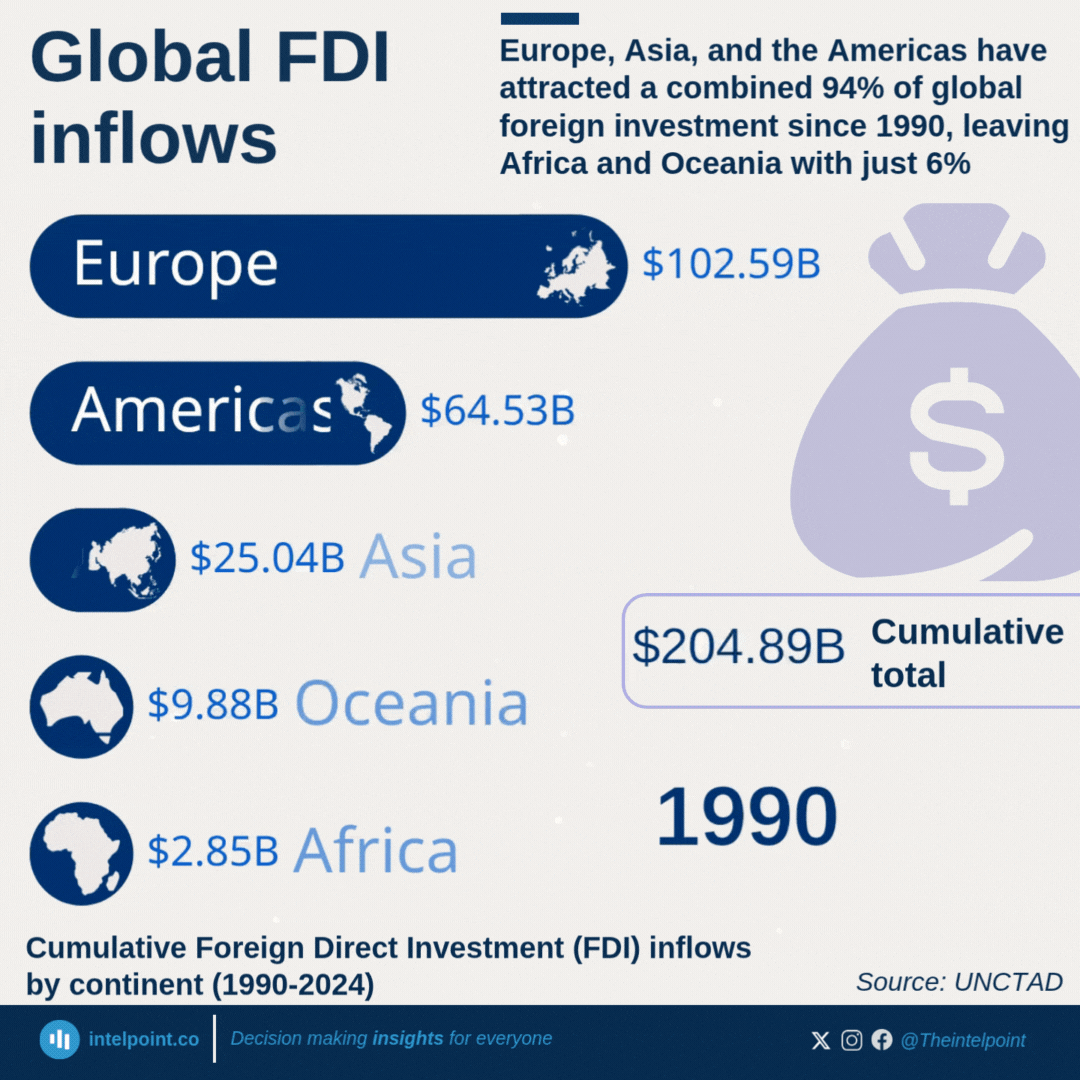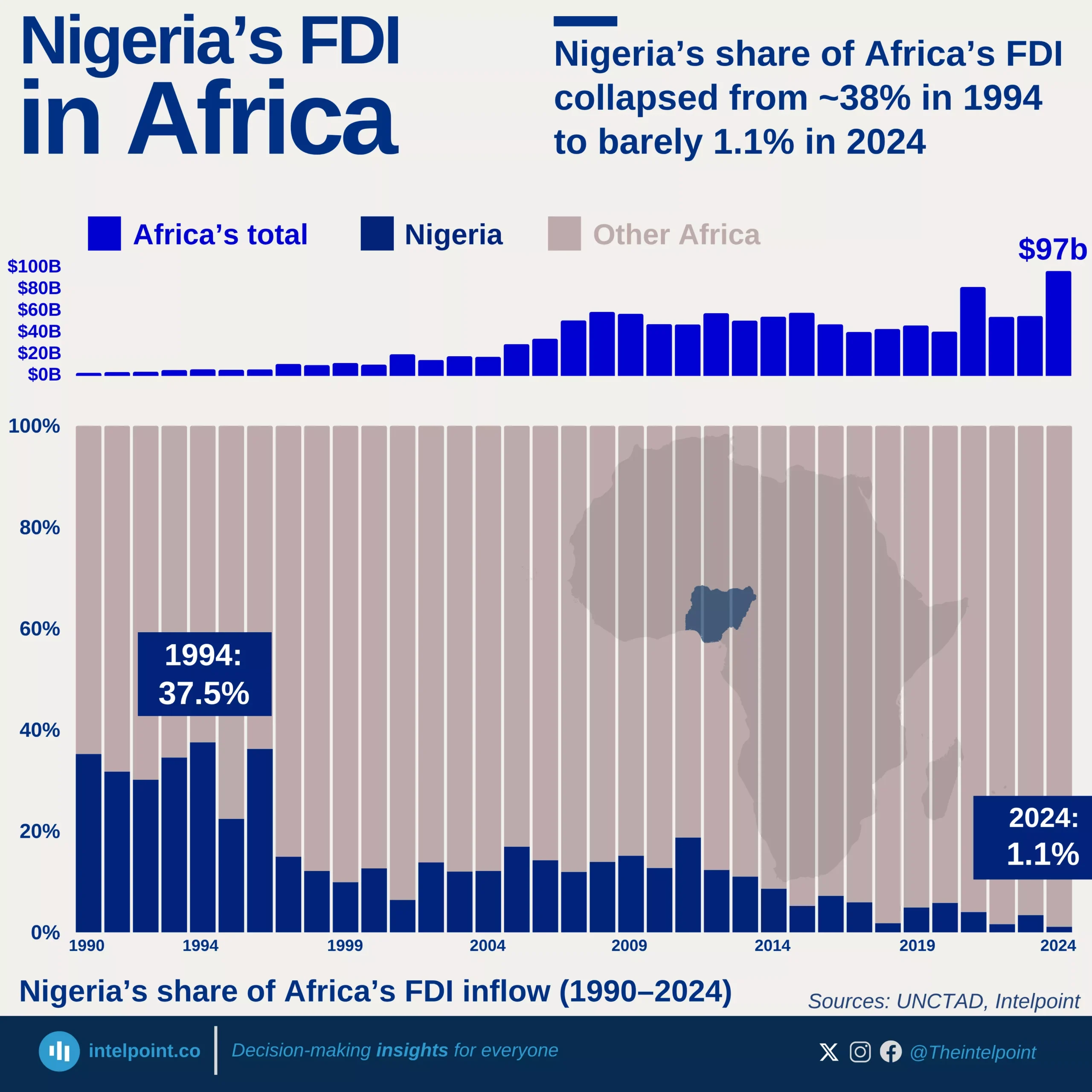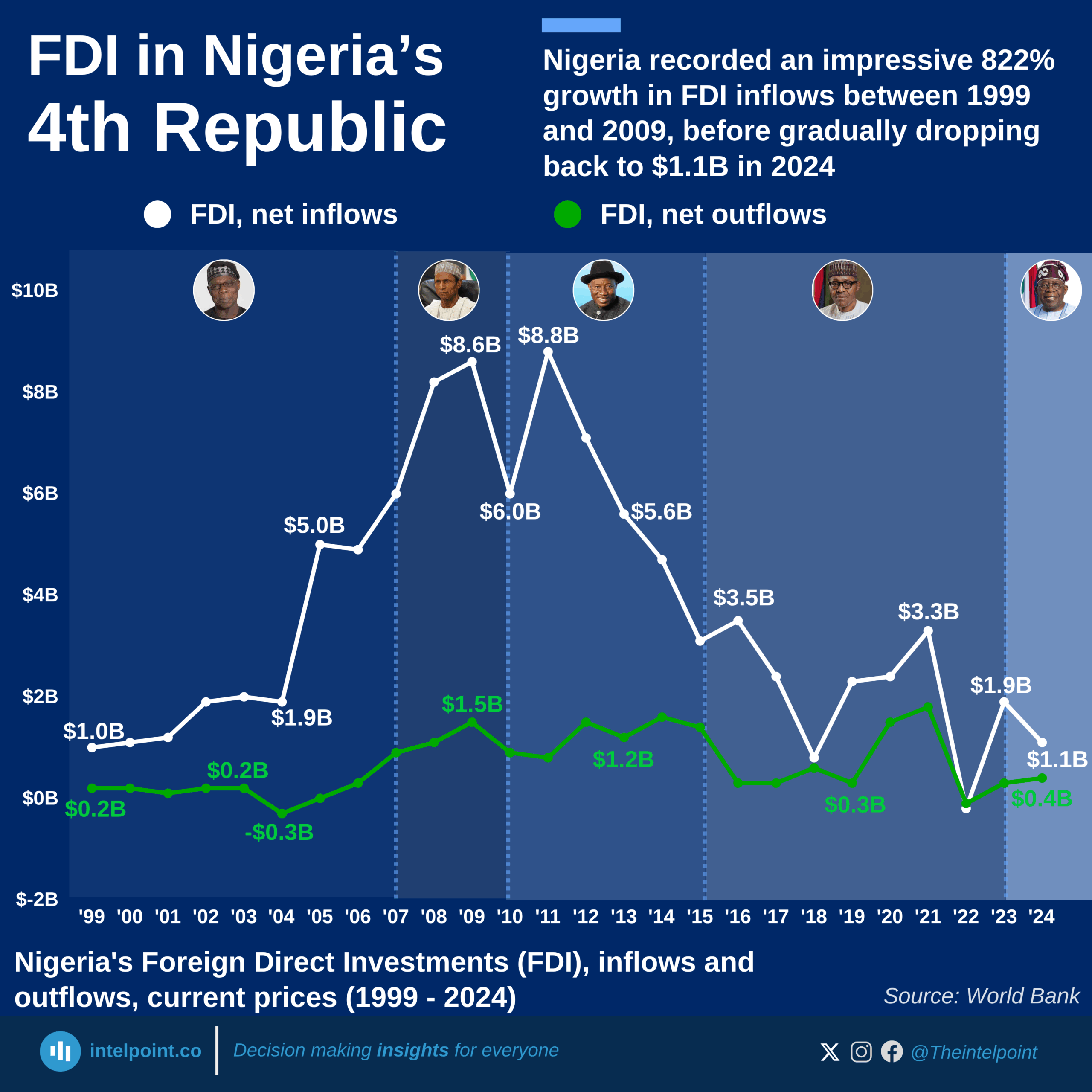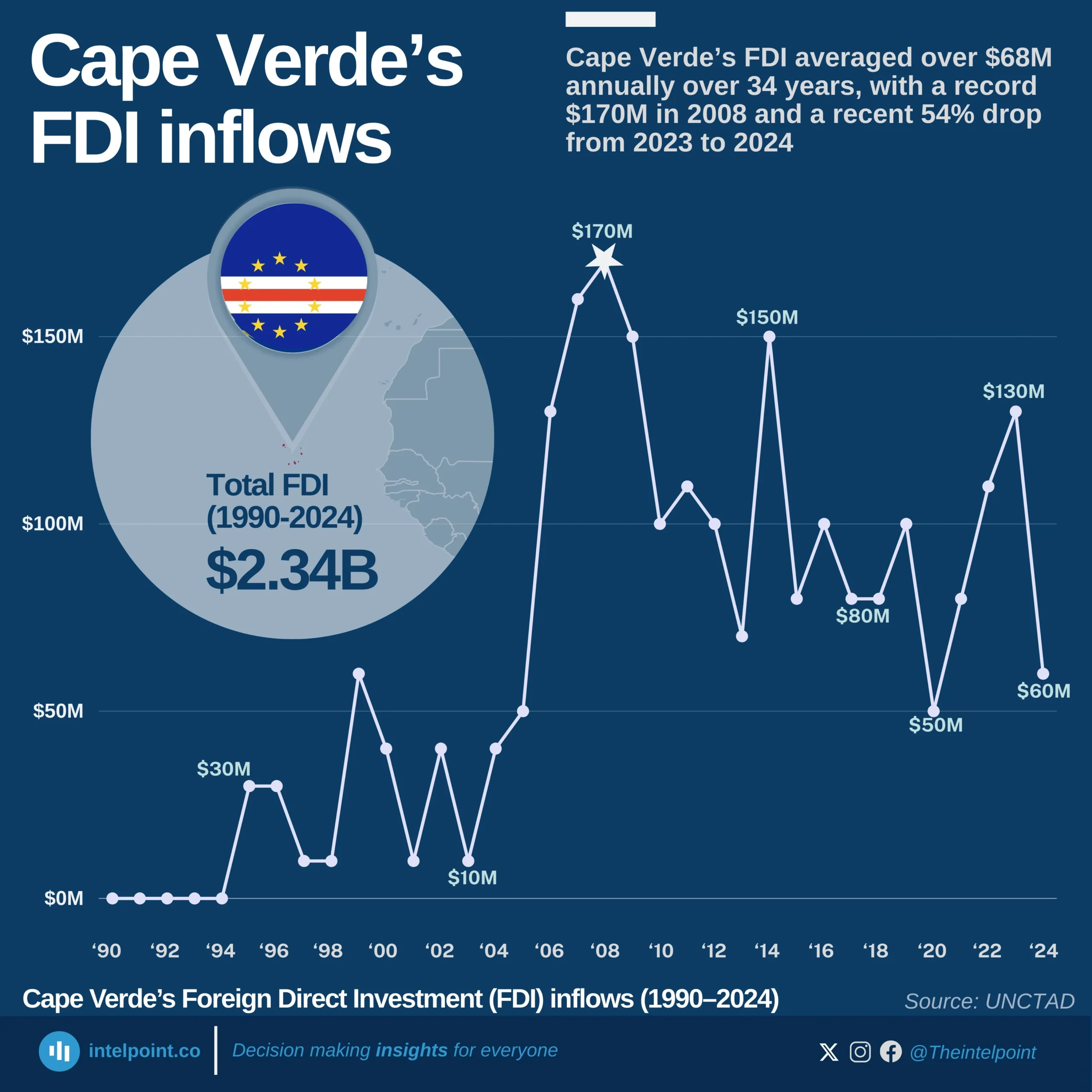In H1 2024, Nigeria's FDI accounted for just 2.5% of the country's $5.98 billion total capital imports, down from 14% in H2 2023 and 6.2% in H1 2023.
This highlights a shift towards other capital inflows like portfolio investments.
Portfolio investments rose significantly to $3.48 billion, rebounding from $397 million in H2 2023 and $756 million in H1 2023.





